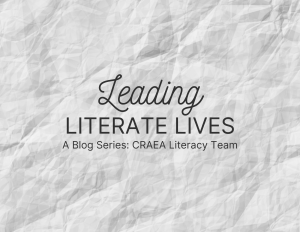
“Informed teachers are our best insurance against reading failure. While programs are very helpful tools, programs don’t teach; teachers do.” -Louisa Moats
The Science of Reading is bringing a renewed focus to the ways in which we think about teaching and learning in our literacy classrooms. As we think about what this research is telling us, it’s important that we first have a shared understanding of what the Science of Reading is and isn’t.
Nell Duke and The Reading League define The Science of Reading as “a vast, interdisciplinary body of scientifically-based research about reading and issues related to reading and writing. Years of empirical studies give us a deeper understanding of our students’ processes and skills to understand the meaning of printed words. It is not a slick, packaged program, marketed to school districts and sold on the internet. It is a body of research conducted over 50 years that has expanded and changed. The information we’ve uncovered about literacy acquisition should be incorporated into our daily instructional routines and practices.”
With this definition in mind, it makes sense that we might wonder how we can ensure our current curricular resources and materials are selected and used in a way that best supports the Science of Reading. Many publishing companies are capitalizing on this shift in practice by marketing materials that claim to be “science of reading.” As Duke’s previous definition points out, the science of reading isn’t a program, but rather a set of instructional principles that are best for teaching students to read. These include: explicit instruction, systematic and cumulative instruction, and diagnostic instruction.
Explicit Instruction:
Explicit instruction is delivered through common language, using direct modeling and teaching of new concepts. Blevins (2020) defines explicit as instruction “taught directly to students, rather than using a discovery (implicit) method. The teaching is intentional.” The Gradual Release model is an integral part of explicit instruction. First, the teacher introduces the concept and demonstrates use of the concept. Next, the student(s) and teacher engage in guided practice aimed at accuracy and automaticity, with immediate corrective feedback. Finally, the student practices the skill independently and receives additional feedback from the teacher.
Systematic & Cumulative Instruction:
Using a common scope and sequence is critical to supporting students in a systematic way. There is not one “best” or agreed-upon scope and sequence indicated in the research. However, a good scope and sequence will move through language skills from simple to complex. In addition, an intentional review cycle of previously taught concepts is essential to ensuring sufficient opportunities for mastery (distributed or interleaved practice). This correlates to Hattie’s research on spaced vs mass practice, which has an effect size of 0.65.
Diagnostic Instruction:
Diagnostic teaching requires that both formal and informal formative assessments are utilized to determine mastery of skills. Throughout the lesson, the teacher must respond to the needs of the student within their systematic scope & sequence. The teacher must also build in opportunities for summative assessment to ensure that new concepts have been learned.
If you’re considering how your curriculum can align with these principles and practices, please reach out to your CRAEA Literacy Consultants.
Connected Learning Opportunities
What is the Science of Reading? series (LMS)
Helpful Resources
Curriculum Evaluation Guidelines (Reading League)
A Fresh Look at Phonics – NAESP. (2023) https://www.naesp.org/resource/a-fresh-look-at-phonics/
Iowa Department of Education Dyslexia Guidance
